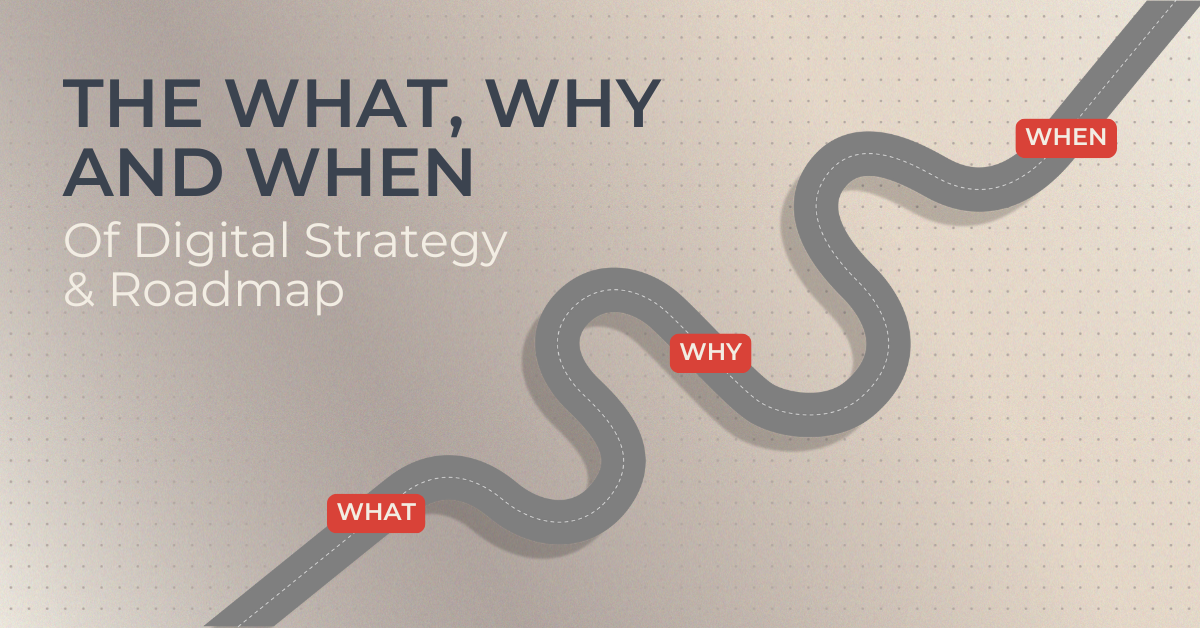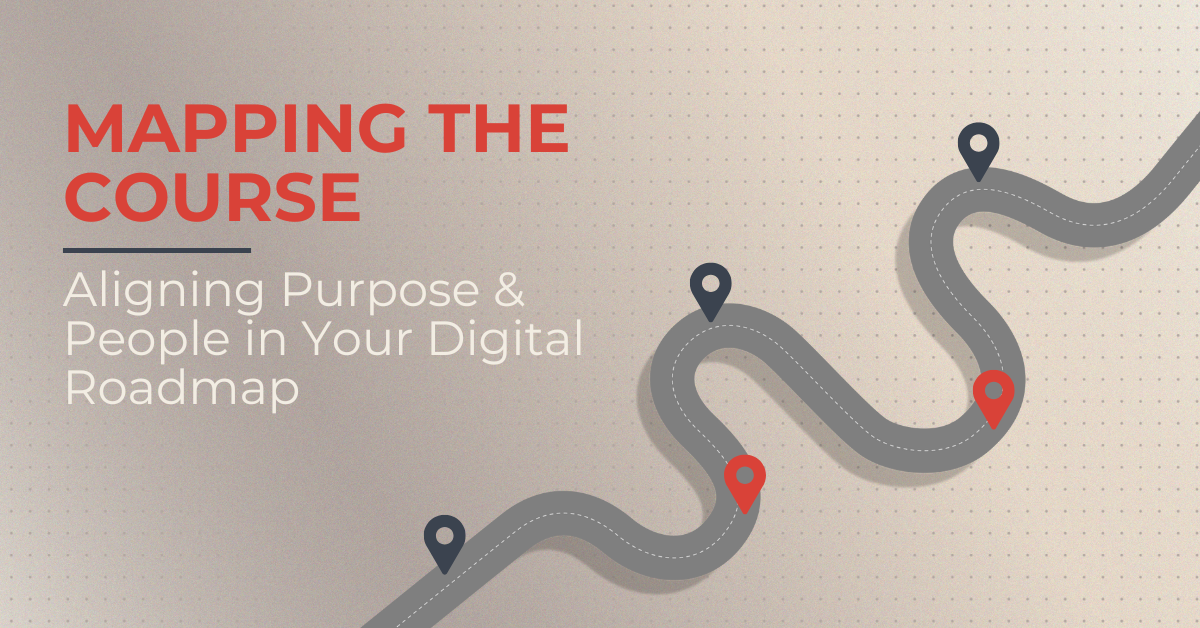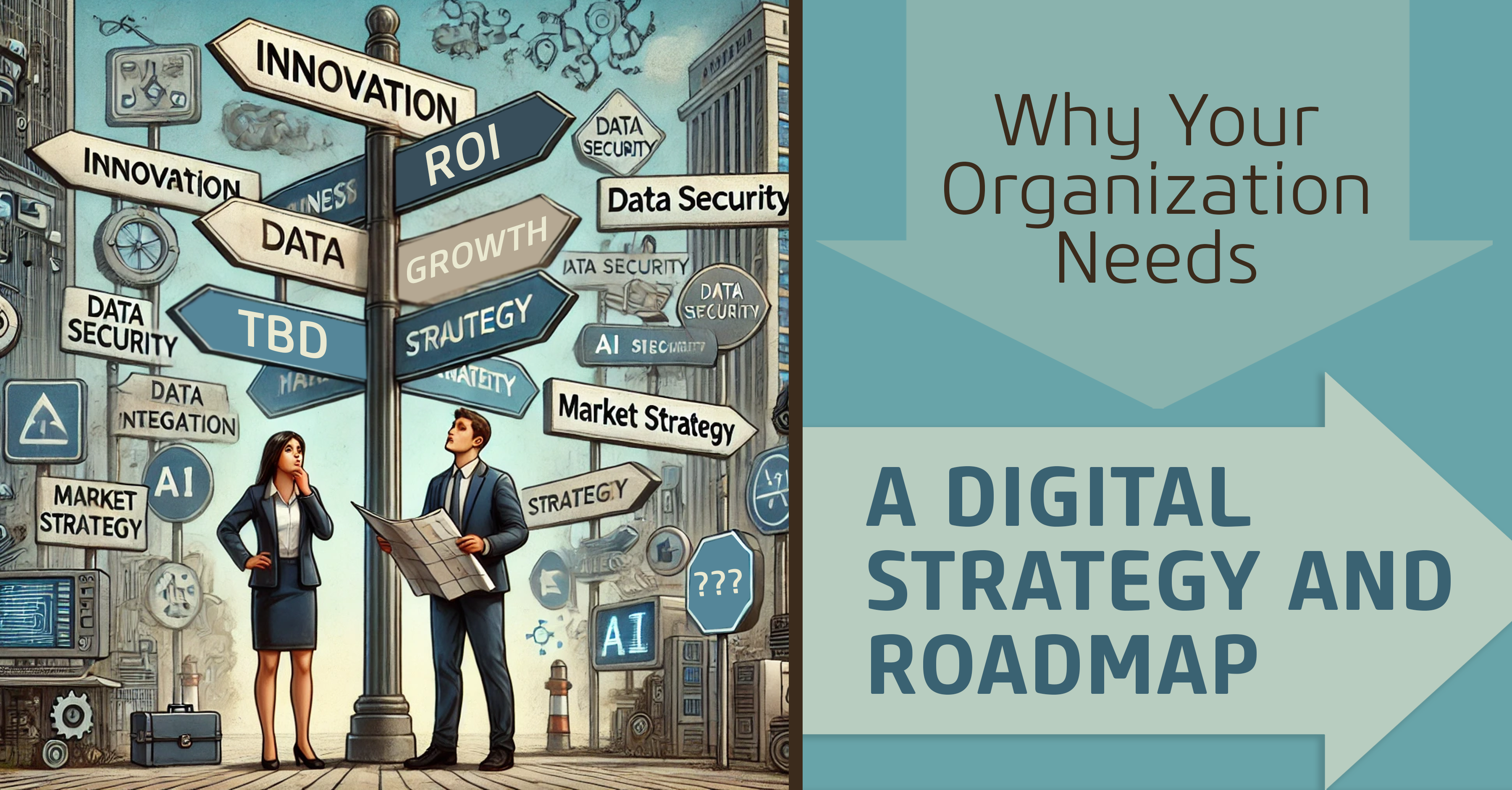
Whitney White
Whitney is a Certified Management Consultant (CMC) and the Principal Consultant of the Digital Advisory Services practice. With over 15 years of professional experience, she brings a cross-functional lens to digital transformation, grounded in expertise across project management, business analysis, process improvement, and data-driven decision making. Her work spans both public and private sectors, where she is known for navigating complexity with clarity, fostering alignment across stakeholders, and helping organizations turn strategic intent into actionable, measurable outcomes. Whitney is passionate about people, systems, and solving the right problems — and thrives at the intersection of data, process, and purpose. Whether shaping digital strategy or designing roadmaps for change, she brings thoughtful structure, insight, and a collaborative spirit to every engagement.
Every great journey starts with two essentials: a destination and a way to get there. In the world of digital transformation, your destination is your organizational goals, and the digital strategy and roadmap are the tools that ensure you reach them—on time, on target, and prepared for what lies ahead.
But what exactly is a digital strategy? How does a roadmap fit into the equation? And why are these two elements critical for any organization navigating the challenges of modern business? While the terms "digital strategy" and "roadmap" are sometimes used interchangeably, they each serve distinct yet complementary purposes.
Prefer to watch instead? The video snippet here covers the same key insights from Whitney!

A digital strategy is your compass—it defines the "why" and the "where" articulating the high-level vision of how digital initiatives will enable business value and align with your organizational goals. The digital strategy, outlining the digital change goals, ensures that every technological effort is rooted in a broader, business-aligned context, answering critical questions such as: Why are we pursuing digital transformation? How will it contribute to our success?
Meanwhile, the digital roadmap is your map—it provides the "how" and the "when" It’s a tactical guide that outlines the prioritized initiatives, timelines, and key milestones required to execute the digital strategy effectively. The roadmap ensures that efforts are sequenced and realistic, bridging the gap between strategic intent and actionable execution.
To better understand the relationship between organizational goals, digital strategy, roadmap, and execution, consider the layered target diagram below. The diagram illustrates how these components build upon one another, starting with organizational goals at the center, which set the destination for the organization’s digital transformation journey. This relationship is foundational; the organizational goals are not just another layer, they are the core that informs and drives the strategy, roadmap, and ultimately, execution.


Having a clear "why" gives direction to every step of the journey, ensuring that the "why nots" become just as evident. When the digital strategy aligns with organizational goals, the roadmap and eventual transformation journey become tools of intentional action, not just reactions to trends or external pressures. This alignment ensures that technology is implemented not for its own sake, but to directly support the organization's unique needs and aspirations. By grounding every initiative in the organizational "why," businesses can confidently navigate the complexities of digital transformation, prioritizing what truly matters.
This visual encapsulates the journey, reinforcing how digital strategy and roadmaps are vital bridges between high-level objectives and practical execution. Together, these tools are indispensable, ensuring organizations can move forward with clarity, purpose, and alignment. Without one, the other loses its effectiveness—you need both to get the complete picture and start your transformation journey from an informed position.
Why Are They Important?
A digital strategy and roadmap aren't just "nice-to-haves"; they are critical to ensuring that your digital transformation efforts deliver tangible value.
Without a digital strategy and roadmap, organizations risk veering off course—spending on tools that don’t align with their goals, missing opportunities for innovation, or encountering operational inefficiencies. A well-defined strategy and roadmap ensure that every initiative serves a purpose, contributing directly to your organization’s success. Here’s why they matter:
1. Alignment with Business Goals
By grounding digital initiatives in the broader organizational strategy, the digital strategy ensures that technology investments directly support business objectives. This avoids wasted effort on initiatives that fail to deliver measurable value.
2. Clarity and Focus
Without a clear strategy and roadmap, organizations risk fragmenting their efforts across too many priorities. These tools create a structured approach, helping stakeholders focus on what matters most.
3. Flexibility and Adaptability
The digital landscape is ever-changing. A well-crafted strategy and roadmap provide a foundation that is both structured and flexible, allowing organizations to pivot and adapt to emerging challenges and opportunities.
4. De-Risking Transformation
Transformation efforts are inherently risky. A detailed roadmap mitigates these risks by breaking down the journey into manageable steps, identifying dependencies, and addressing potential bottlenecks in advance.
Moreover, these tools foster collaboration across teams. By aligning stakeholders on a unified vision, organizations can break down silos and create momentum that drives sustainable change.
Dispelling Common Misconceptions
Understanding what digital strategy and roadmaps are not, is just as important as understanding what they are.
- They are not static documents. Business goals evolve, and so too should your digital strategy and roadmap. Treating them as living documents ensures they remain relevant and effective.
- They are not IT-centric tools. While technology plays a significant role, the focus must always be on how digital initiatives enable broader business objectives.
- They are not an organizational strategy. Rather, they are enablers, translating the organization’s overarching vision into actionable digital goals and initiatives.

Now that we've covered what a digital strategy and roadmap are, it's important to address when they should be developed. In digital transformation, the right timing is critical—just as crucial as defining the strategy itself. Developing your strategy and roadmap at the right moment ensures that your initiatives are aligned with both your current organizational needs and the evolving business landscape.
Let’s break down the pivotal moments that signal it’s time to take action and invest in defining your digital path.
A digital strategy and roadmap are not one-size-fits-all, nor are they a routine annual task. Instead, they’re best developed when key organizational or market changes demand clarity, direction, and a clear alignment between business goals and technology investments.
Here are some key scenarios that highlight the need for a digital strategy and roadmap:
Business Transformation or Growth
If your organization is expanding into new markets, launching new services, or undergoing a merger or acquisition, technology will likely play a pivotal role in enabling these changes. A digital roadmap ensures that the right investments are made to support scalable growth while avoiding disjointed or redundant efforts.
Shifts in Market Dynamics
Competitive pressures, regulatory changes, or the emergence of disruptive technologies often signal the need for a re-evaluation of your digital strategy. A roadmap provides a structured response to external changes, allowing your organization to adapt while maintaining its competitive edge.
Technology Debt or Aging Infrastructure
As systems age and processes lag, inefficiencies become apparent. If your organization struggles with disconnected systems, manual processes, or rising maintenance costs, it may be time to define a strategy that modernizes and streamlines your technology environment.
Customer Experience Gaps
Today’s customers demand seamless, personalized, and efficient interactions. If customer feedback reveals dissatisfaction or your competitors are outpacing you in customer experience innovations, a digital strategy can realign your organization with customer needs.
New Leadership or Strategic Direction
A change in leadership or a shift in organizational priorities often calls for a refreshed vision. A digital roadmap provides clarity for new initiatives, ensuring alignment with the broader business direction.
Avoiding Missed Opportunities
Delaying the creation of a digital strategy and roadmap can lead to missed opportunities, wasted investments, and misaligned initiatives. For example, jumping straight into solution implementation without a clear plan often results in siloed systems or technology that fails to meet business needs. Similarly, reacting too late to market changes can leave your organization struggling to catch up.
A well-timed roadmap, however, bridges these gaps. By defining clear initiatives, setting priorities, and aligning stakeholders early on, organizations can transition smoothly from planning to execution, delivering value with minimal disruption.
Knowing When to Refresh
Digital strategies and roadmaps aren’t static documents; they’re living tools. Even after implementation begins, circumstances can change—market shifts, customer feedback, or internal progress may necessitate adjustments. Revisiting and refining your strategy ensures continued alignment with organizational goals and maximizes long-term impact.
Take the First Step
Recognizing when to act is the first step in digital transformation. Whether your organization is navigating change, tackling inefficiencies, or seizing a growth opportunity, a digital strategy and roadmap provide the clarity, direction, and confidence to move forward.
Don’t wait for the perfect moment—it may never come. Instead, start by identifying your organizational needs and triggers, and begin building the framework that will guide your journey into the future.
The Journey Begins
Embarking on a digital transformation journey without a digital strategy and roadmap is akin to setting out on a road trip without a map or GPS—you may move, but you risk losing direction, wasting resources, and arriving somewhere far from your intended destination. A well-defined digital strategy and roadmap ensure that every initiative aligns with your goals, maximizes value, and prepares you for a future of growth and innovation.
The journey doesn’t end with the roadmap—it begins there. Transformation execution relies heavily on the foundational work outlined in the digital strategy and roadmap development. The ability to track progress, measure impact, and make course corrections ensures that your organization’s efforts remain relevant in an ever-evolving landscape.
Whether you’re just starting or looking to refine your approach, these tools are the key to driving meaningful and measurable transformation. In the next installment, we’ll explore how roadmaps help keep your digital transformation on course, balancing strategic vision with operational realities. Stay tuned!
If you're ready to take the next step and need expert guidance, consider partnering with professionals who have a proven track record in digital strategy and roadmap development. Your organization’s future depends on it.
About the Author

Whitney White
With over 15 years of professional experience, Whitney is a certified Project (PMP) and Business Analysis (CBAP) professional with a passion for people, numbers, systems, projects, data, process improvement, analytics and reporting. She enjoys challenges in both private and public sectors, and is am excited by opportunities that provide an exciting combination of these elements.





Submit a Comment